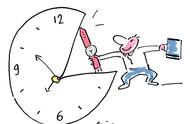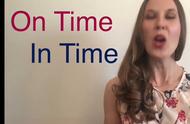at用在时刻前,亦与正午、午夜连,
黎明、终止和开端,at与之紧接着相伴。
周月季年长时间,in须放在其前面,
泛指一晌和傍晚,也要放在in后边。
on指特定某一天,日期、星期和节日前
某天上下和夜晚,依然要在on后站。
今明昨天前后天,上下这那每之前,
at、in、on都不用,此乃习惯记心间。
介词为虚词,不能单独充当句子成分,必须同名词、代词、短语、句子构成介词短语,才能充当句子成分。介词短语在句中常作表语、定语、状语和补足语。介词的用法比较复杂,在英语学习中须多多注意。
本人根据多年教学与学习的经验把介词用法做一小结,以期雅俗共赏并对大家学习和记忆有
一、介词及介词短语介词像个“游离体”, 名前动后常出现,
一旦组成“某结构”, 句中成分有一位。
“介 宾”叫“介短”, 作“形、副”句里边。
“宾补、表、定、状”, 都能用得上①。
“动 介”——动词性②, “及、不及物”谓语用。
成语、习语常固定, 应用起来有弹性。
注 ①介词后面的名词、代词或数词是介词的宾语,介词和介词宾语合成介词短语。介词短语在句中的语法作用相当于形容词或副词,在句中做宾(主)语、补足语、表语、定语或状语。
②“动词 介词(副词)”组成一个动词词组或短语动词,其语法作用相当于一个及物动词或不及物动词,在句中作谓语。
二、介词在句中的位置介词活跃句关键, 短语合成形简单,
独作成分看不见, 介短表定状可担。
before时空在之前, after之后off远。
直上 over,above斜, under,below下相反。
直到till,on表面, 穿过through,for因缘。
by表旁边in里面, with伴随by车船。
时间地点at、in、on, 二者between多among,
behind后面beside旁, 附近near沿着along。
from来自like像, 表示目的for,to当。
of所属周围round, 向上up向下down。
三、on,at,in用法巧记on,at,in这三个常用介词都可以表示时间和地点,但具体用法不同,多数学生对它们混淆不清。现在只要记住了口诀,就可避免at,on,in的种种误用。
1. on,in,at表示时间
on“在具体某一天”①
“当某时”,动名词, arrival,death前;
early,late位句先②,
用in一般“上”“下”“晚”;
on用于天,in用于月、季、年③;
限定三时in要变。④
at是个时间点,
“工作”“时刻”与“圣诞”⑤。
at noon(night),in the day,
习惯用语记心间。
注:①on表示在具体某一天及具体某一天的上午、下午和晚上。
例 On mother's Day, we should send flowers to our mother. 母亲节,我们应该送花给我们的母亲。
On my arrival home,I found he had gone already.当我到家时,我发现他已经走了。
② 当early,late用于句首修饰介词短语时,尽管表示具体某一天的上午、下午、晚上,都要用in,泛指一般的上、下午,晚上也用in 。
例 Early in the morning of National Day,I got up to catch the first bus to the zoo. 国庆节一清早,我便起床去赶到动物园的第一班公共汽车。
My father begins work at 8:00 in the morning and stops work at 4:00 in the afternoon. 我父亲上午8点上班,下午4点下班。
③于将来时态表示“过一段时间后” 及表示“在……期间” 和“在某个季节,某年、某月” 都用in。
例 I hear he’ll be back in a month.我听说他将于一个月后回来。
In the course of the last lesson in French,little Franz was listening to the master very attentively.在那最后一堂法语课中,小弗朗兹非常用心地听着老师讲。
Xiao Ming was born in December of 2004. 小明生于2004年12月。
④当 morning,afternoon,evening有前位定语或后置定语限定时,就不用in而用on。
例 on a hot (summer) noon 在一个炎热(夏天)的中午
on Monday morning 在星期一上午
on the morning of March 8th在3月8日上午
⑤ 表示某时某刻及在work,Christmas前用at。
例 We get up at eight o’clock. 我们8点起床。
My father are busily at work all day. 我父亲整天忙于工作。
In western countries children get present from their parents at Christmas. 在西方国家,孩子们在圣诞节得到父亲给的礼物。
2. on,in,at表示地点
on“在之上”接触面,“靠近、接壤、左右边”①;
in“在里面”和“中间”②;
at表示小地点, “入口、车站、电影院”③;
home出现定语、冠, 须用in把at换④;
“夜间、车辆”若有限, 及“在途中”on在前⑤。
注: ①在表示地点时,指“在……之上(与表面接触)” “靠近、接壤”及“在左右边”都用on。
例 There is an English-Chinese dictionary and two grammar books on the big desk.那张大写字台上有一本英汉词典和两本语法书。
Korea lies on the northeast of China. 朝鲜位于中国东北方。
Tom was sitting on my left when we saw the film yesterday. 我们昨天看电影时,汤姆坐在我左边。
②表示“在……里面”(即物体内部),“在……中间”(即middle
查看文章
on,at,in用法巧记2007-06-19 21:51on,at,in这三个常用介词都可以表示时间和地点,但具体用法不同,多数学生对它们混淆不清。现在只要记住了口诀,就可避免at,on,in的种种误用。
1. on,in,at表示时间
on“在具体某一天”①
“当某时”,动名词, arrival,death前;early,late位句先②,用in一般“上”“下”“晚”;on用于天,in用于月、季、年③;限定三时in要变。④at是个时间点,“工作”“时刻”与“圣诞”⑤。at noon(night),in the day,习惯用语记心间。
注:①on表示在具体某一天及具体某一天的上午、下午和晚上。
例 On mother's Day, we should send flowers to our mother. 母亲节,我们应该送花给我们的母亲。
On my arrival home,I found he had gone already.当我到家时,我发现他已经走了。
② 当early,late用于句首修饰介词短语时,尽管表示具体某一天的上午、下午、晚上,都要用in,泛指一般的上、下午,晚上也用in 。
例 Early in the morning of National Day,I got up to catch the first bus to the zoo.国庆节一清早,我便起床去赶到动物园的第一班公共汽车。
My father begins work at 8:00 in the morning and stops work at 4:00 in the afternoon. 我父亲上午8点上班,下午4点下班。
③于将来时态表示“过一段时间后” 及表示“在……期间” 和“在某个季节,某年、某月” 都用in。
例 I hear he’ll be back in a month.我听说他将于一个月后回来。
In the course of the last lesson in French,little Franz was listening to the master very attentively.在那最后一堂法语课中,小弗朗兹非常用心地听着老师讲。
Xiao Ming was born in December of 2004. 小明生于2004年12月。
④当 morning,afternoon,evening有前位定语或后置定语限定时,就不用in而用on。
例 on a hot (summer) noon 在一个炎热(夏天)的中午
on Monday morning 在星期一上午
on the morning of March 8th在3月8日上午
⑤ 表示某时某刻及在work,Christmas前用at。
例 We get up at eight o’clock. 我们8点起床。
My father are busily at work all day. 我父亲整天忙于工作。
In western countries children get present from their parents at Christmas. 在西方国家,孩子们在圣诞节得到父亲给的礼物。
实际上是有关介词in和on的区别。介词in和on在表示方位的时候,在用法上有如下区别:
in表示在……中,在……内,例如:
in the village(在村里)
in the street(在街上)
in the fields(在田里)
in the woods(在树林里)
in the wall(在墙里面,例如在墙上打个钉)
on 表示在一个平面上,例如:
on the table(在桌上)
on the lake(在湖面上)
on the wall(在墙上,例如在墙的平面上挂幅画)
再比较:
We swim in the river.(我们在河里游泳)
We have a house on the river.(我们有座房子在河面上)
【in】我是“大姐”,因为我后面所接的都是较长时间。具体用法有:
1. 表示在较长的时间里(如周/月份/季节/年份/世纪等)。如:in a week; in May; in spring/summer/autumn/winter; in 2008; in the 1990’s等。
2. 表示在上午、下午或晚上。如:in the morning/afternoon/evening。
3. in the daytime(在白天)属于固定搭配,指从日出到日落这一段时间,反义词组是in the night。
4. “in +一段时间”表示“多久以后/以内”,常与将来时连用。如:in half an hour; in ten minutes; in a few days等。
【on】我是 “二姐”,我后面所接的时间多与日期有关。具体用法有:
1. 表示在具体的某一天(如日期、生日、节日或星期几)。如:on May 4th, 1919; on Monday; on Teachers’ Day; on my birthday; on that day等。
2. 表示某一天的上午、下午或晚上。如:on the morning of July 2; on Sunday afternoon; on a cold winter evening等。
【at】我是“小妹”,因为接在我后面的时间最短。具体用法有:
1. 表示在某一具体时刻,即几点几分。如:at six o’clock; at half past nine; at a quarter to six; at this time等。
2. 表示在某一短暂的时间。如:at noon; at this moment; at the end of a year; at the start of the concert等。












